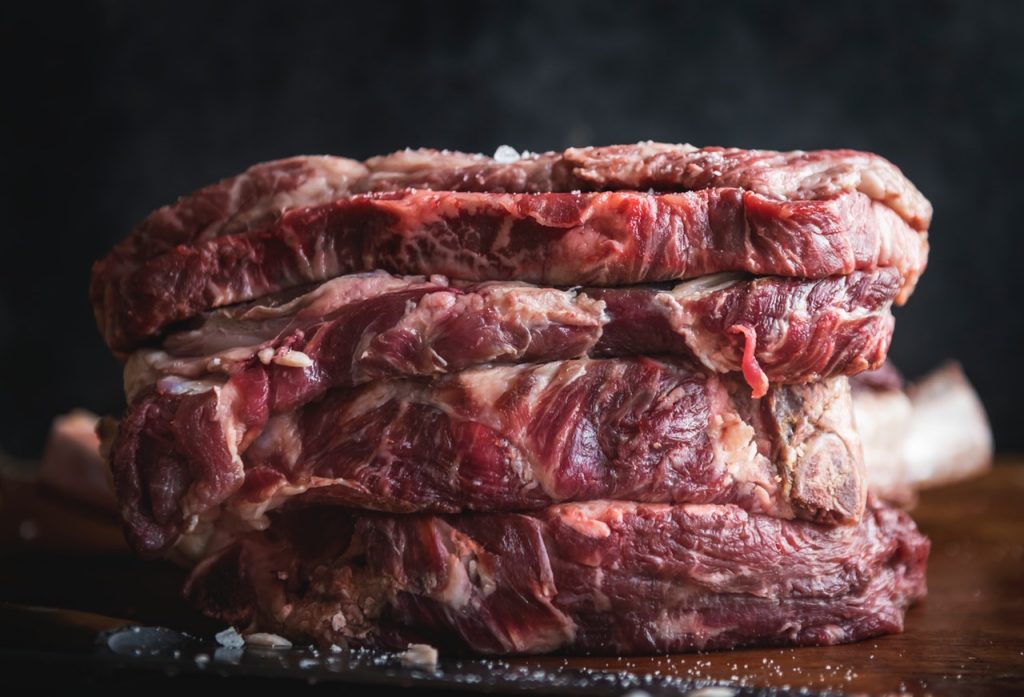
Benefits of Eating Red Meat
Many benefits come with eating red meat in moderation. Meat is a good source of protein of both quantity and quality. Our bodies need some source of protein to get the right nutrients and energy. Pro
tein is one of the main sources to have a normal balanced diet. More benefits associated with the consumption of red meat are:
- Essential amino acids, which are biologically important compounds that our bodies don’t self-
produce. We can find amino acids in meats, dairy products and legumes.
- Vitamins and minerals, such as vitamin B12 which is essential to in maintain the bodies healthy red blood cells, nerve cells and proteins.
- Iron also helps maintain healthy red blood cells.
- Zinc helps aid digestion and keeps our body’s immune system healthy.
- Phosphorous maintains bone health.
Maximize the Benefits of Eating Red Meat
To maximize these benefits, it’s important to select the proper meat cuts and to be aware of portion control. Choosing leaner meats is very beneficial and helps ensure that you are gaining all the proper nutrients. Meat cuts labeled “loin” are the smarter choice. Loin meats contain less fat and are a good source of protein. Choose meats that are labeled up to 95% lean. Grass-fed beef is better for you. It is not only higher in nutrients, but it’s much leaner. Not knowing these factors, can lead us choosing meats higher in saturated fat. Unfortunately, several years of over-eating red meat, can wreak havoc on the body with some unpleasant health risks.
The Downside to Eating Red Meats
The downside to eating red meats are those related to the amount of fat, cholesterol, and sodium content. These risk factors bring an increase rise in heart disease, such as heart attacks and clogged arteries.
- High sodium content in red meats can lead to high blood pressure. High blood pressure is a condition where long-term force of blood against artery walls is forceful enough to cause heart disease. There is also an increased risk of stroke, a stroke is when blood flow to a part of the brain stops. Lastly heart failure, which is the hearts inability to properly pump an adequate supply of blood throughout the body.
- Processed meats are said to put people at risk for many different types of gastrointestinal cancers as well as heart disease.
Some studies show that people who mostly ate red meats over a ten-year period were likely to take ten years off a normal life span opposed to those who consumed in moderation. Whether it’s a cookout, a BBQ, a family gathering or just dinner, the key is to safely consume red meats in moderation and select a lean high-grade meat. A recommended portion for a lean cut of meat is a three ounce serving. The three ounce serving is generally about 180 calories and you get ten essential nutrients just from the serving. Sticking to lean meats and proper portions will ensure that you get the correct amount of nutrients for your body.
The information provided is for general interest only and should not be misconstrued as a diagnosis, prognosis or treatment recommendation. This information does not in any way constitute the practice of medicine, or any other health care profession. Readers are directed to consult their health care provider regarding their specific health situation. Marque Medical is not liable for any action taken by a reader based upon this information.


 produce. We can find amino acids in meats, dairy products and legumes.
produce. We can find amino acids in meats, dairy products and legumes.